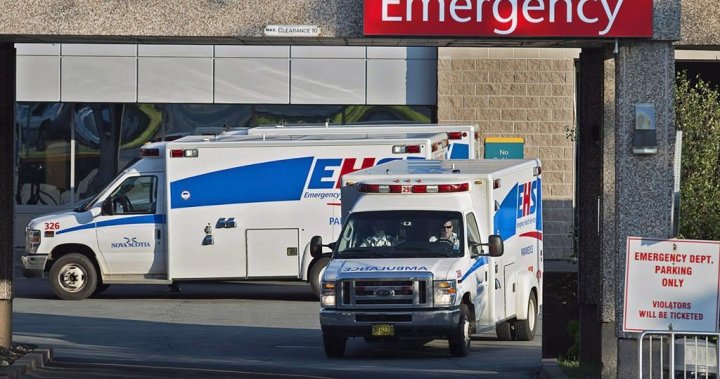Wildfires could compound strain on already burdened ERs, officials warn – National | Globalnews.ca
As Canada grapples with the intensifying threat of wildfires, an already overburdened emergency room system may also be faced with an influx of patients seeking medical care for smoke-related health conditions, according to health officials.
Speaking during a Monday press conference, Health Minister Jean-Yves Duclos acknowledged the country’s emergency departments are, “already quite burdened,” as wildfires continue to burn and produce harmful smoke.
“The (emergency room) situation is obviously continuing,” he said. “Although there are signs of improvement in some parts of Canada overall, it is still an issue of great concern both to workers and to patients.”
And as emergency rooms continue to feel the strain, Duclos added we haven’t yet seen the peak of the wildfire season in Canada – that is generally reached in July and the beginning of August. That means more smoke (and the health-related issue that come with it) could be on the way.
Emergency rooms across Canada are grappling with a mounting crisis that is leading to closures, reduced hours and longer patient wait times.
An editorial released Monday in the Canadian Medical Association Journal warned the upcoming summer months could bring “dire consequences” to the country’s ER impacting patient outcomes and provider well-being.
The editorial was written by Dr. Catherine Varner, an ER doctor at the Sinai Health System in Toronto.

“The summer months now also bring a higher risk for climate-related disasters, like the heat dome of 2021 or the wildfires that have already resulted in widespread evacuations this spring, that can quickly exceed the capacity of emergency services and hospital resources,” the report stated.
And with the health-care strain comes an increase in potential visits to the emergency room as wildfires continue to put the health of residents at risk due to acute respiratory distress, burns or pneumonia.
“Of course, any impacts such as asthma going up will have some impact on emergency rooms and the health-care system,” Canada’s Chief Public Health Officer Dr. Theresa Tam said during the Monday press conference.
Wildfire smoke consists of a collection of different gases and particles, and one in particular that is very harmful to human health is called PM 2.5, she said.
“These are small tiny things that you can potentially inhale into your lungs and cause irritation and inflammation,” Tam said.
“There’s certainly a correlation between fine particle inhalation and lung problems and airway problems such as asthma, chronic obstructive airways disease exacerbations, bronchitis and pneumonia. And although the data is still somewhat mixed, there could also be an impact on your cardiovascular system.”
If wildfires continue to become more frequent and severe in Canada, Tam warned there could be long-term health impacts to multiple exposures to the smoke; however, she added: “That we know less about.”

How to protect your health from wildfire smoke
Wildfire smoke can travel hundreds or thousands of kilometres from the fire zone, so it can still affect people even if they are far removed from the immediate vicinity of the smoke, Health Canada officials stated in Monday’s press release.
There is no safe level of exposure to wildfire smoke as it can pose a risk to your health even at very low levels, officials said.
Although everyone is at risk from wildfire smoke, young children, pregnant people, seniors and those who work outside are particularly vulnerable to it.
And as emergency rooms continue to face problems such as staffing shortages, the country’s deputy chief medical officer said Canadians should take steps to avoid going to the ER during wildfire season.
“We have seen from past experience that there will be an impact … in emergency departments,” Dr. Howard Njoo, Canada’s deputy chief public health officer, said during Monday’s press conference. “But I think the average individual can certainly take steps to prepare and hopefully maybe avoid having to see a doctor or go to an emergency department.”
For example, he said if you are prone to asthma, it’s a good idea to have a supply of inhalers in case the wildfire smoke gets particularly bad.
He said to also check Health Canada’s Air Quality Health Index, which shows regions with high pollutants levels.
“Obviously if the air quality is not looking good for a certain date, then maybe you might look at forgoing some of the activities you might normally do,” he said.
© 2023 Global News, a division of Corus Entertainment Inc.
For all the latest health News Click Here




